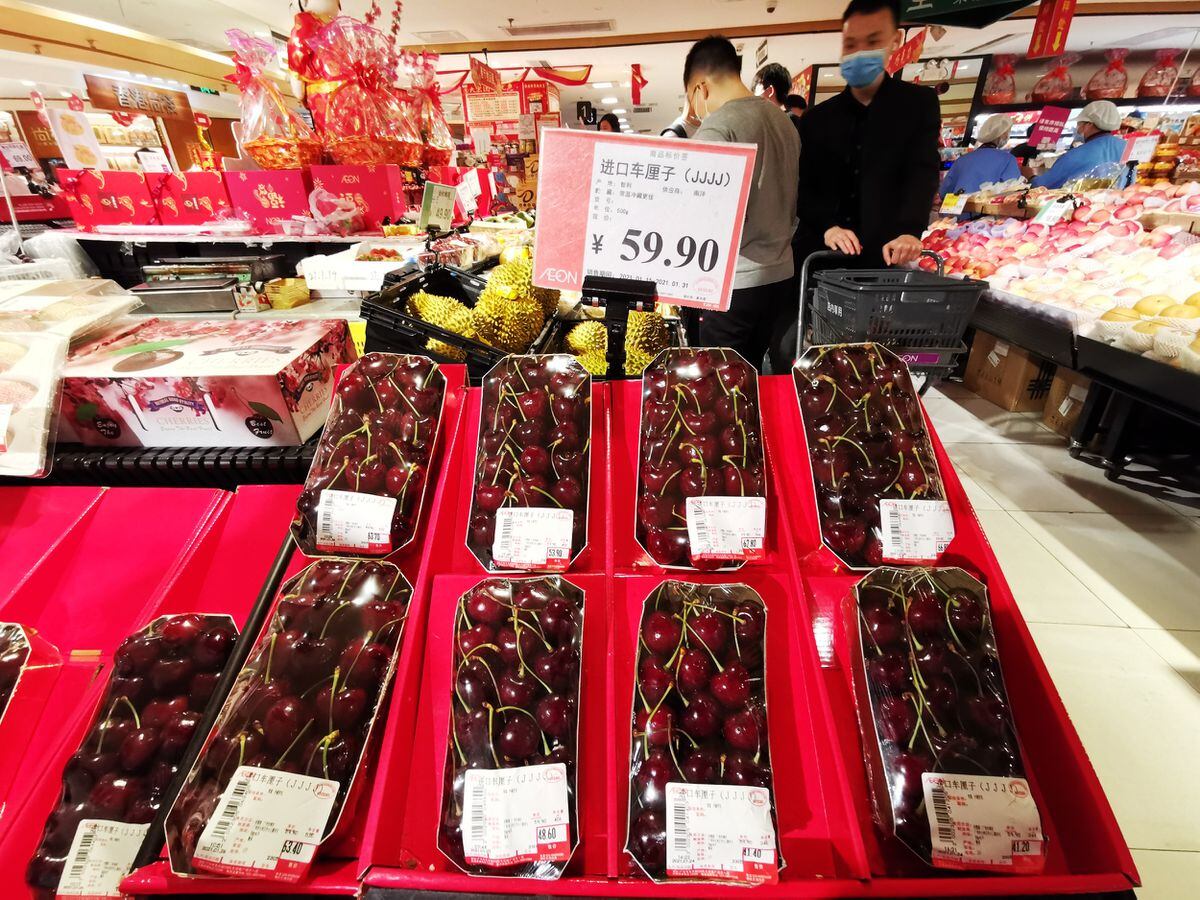Cherries imported from Chile in a supermarket, in Guangzhou, Guangdong province (China). VCG (Getty Images)
EL PAÍS offers the América Futura section open for its daily and global informative contribution on sustainable development.
If you want to support our journalism, subscribe here.
Young Chinese invented the concept
cherry freedom
a couple of years ago to refer to a financial situation strong enough to buy imported cherries without breaking the bank.
The sweet red fruit symbolizes prosperity and fortune and its shape similar to that of a heart represents the reunion of family and friends.
For this reason, in the main festival of the Asian giant, the Lunar New Year, which this year begins on January 22, giving a fine package of cherries is as significant as it is expensive.
This tradition in the country of 1.4 billion inhabitants has brought about a revolution in the fruit industry in Chile, the world's leading exporter of cherries.
China concentrates 88% of the supply of Chilean cherries, whose commercialization has exploded in recent years.
A decade ago, the South American country exported 70 tons to its main buyer.
For this season (2022-2023), the Association of Chilean Fruit Exporters (Asoex) expects that they will reach 400,000 tons, between 10 and 12% more than last year, when fruit exports were close to two million tons. Dollars.
China harvests cherries, but as their New Year catches them in winter they are forced to import the luxury product.
Around those dates, 20,000 kilometers away, Chile ends the post-harvest season of the fruit, a coincidence that has brought happy accounts for the national fruit sector.
A box of five kilos of the first cherries, the most desired product by the Chinese and which travels by plane in November, costs 200 dollars, according to Asoex.
The average, which considers various variables, is $45.
This year the price has dropped “slightly”, but the volume has increased.
The Chilean agricultural business community, mature in terms of production and export, saw the opportunity in 2015, when the great boom in the commercialization of the fruit with the Chinese market took place.
That year, the area planted with cherry trees was 20,000 hectares and today it exceeds 60,000.
Ivan Marambio, president of Asoex, explains that the success is mainly due to the low supply, the high Asian demand, and the high quality of the product.
Added to the three pillars is the rapid growth of the Chinese middle class, a potential new consumer, and the sophistication of the technologies used by the Chilean producer to satisfy a demanding Asian consumer, who is looking for cherries that are as red as possible, sweet and large. .
The latter depends on a complex logistics chain: the cherry is harvested by hand in one month, it is perishable and delicate.
It requires a lot of investment in the cooling process for its conservation and in the selection machines.
The efforts have been accompanied by an aggressive advertising campaign in China -in the last two years they have invested 12 million dollars-, financed mainly by exporters and ProChile, the public foreign trade body.
“Now the promotions are aimed at increasing consumption in the so-called second and third cities.
Not only in the megacities, but in other large ones, but in more rural areas”, says Marambio.
Last October, the association and the Cherries Committee won bronze in the Advertising Effectiveness Awards (IPA) for their marketing campaign under the brand "
Cherries from Chile ".
”, developed together with ProChile.
Now they are strongly committed to growing in the United States and convincing diners that cherries can also be eaten in winter.
In search of Chilean varieties
Chile currently only grows a variety of imported cherries.
The three main ones (lapinis, santina and regina) concentrate almost 80% of the production.
With the aim of developing the national genetics of the fruit, adapted to the climatic conditions of the extensive Chilean territory, and promoting commercialization, in 2009 the Fruit Technology Consortium started, made up of Asoex, producers and exporters, and the Catholic University of Chile (UC).
Marlene Ayala, director of the program, explains that ongoing research aims to expand the varieties to earlier ones, which sprout before November 20, and later ones that better support the conditions of southern Chile.
“The extremes are the most sought after because they have the best economic returns,” she points out.
Image courtesy of the Consorcio Tecnológico de la Fruta of Chilean cherries under evaluation.
A genetic improvement program usually takes about 18 years and the Consorcio Tecnológico de la Fruta is running number 12. Ayala comments that 24 "grafted individuals" are being evaluated in fields, where yield, quality, postharvest are measured, simulated the trip -which can take up to 40 days-, among other factors.
In addition, they have another 120 productions.
The ideal is that the cherry adapted to the particular Chilean climatic conditions fills an interesting niche by price or volume.
"If we get an early one in October, it will mean very high prices per kilo, over 90 dollars," Ayala estimates.
Now, if they get a medium season, when there is a lot of production in the central area, the return may not be better due to price, but rather due to volume.
Other foreign programs are doing the same: bringing and testing new varieties, but they are still under evaluation.
The director of the Consorcio Tecnológico de la Fruta anticipates that they can add a new Chilean variant to the industry in 2028. "They have outstanding characteristics," says the UC academic.
With at least one variable working, it can mean a new revolution in the industry.
Subscribe to continue reading
Read without limits
Keep reading
I'm already a subscriber









